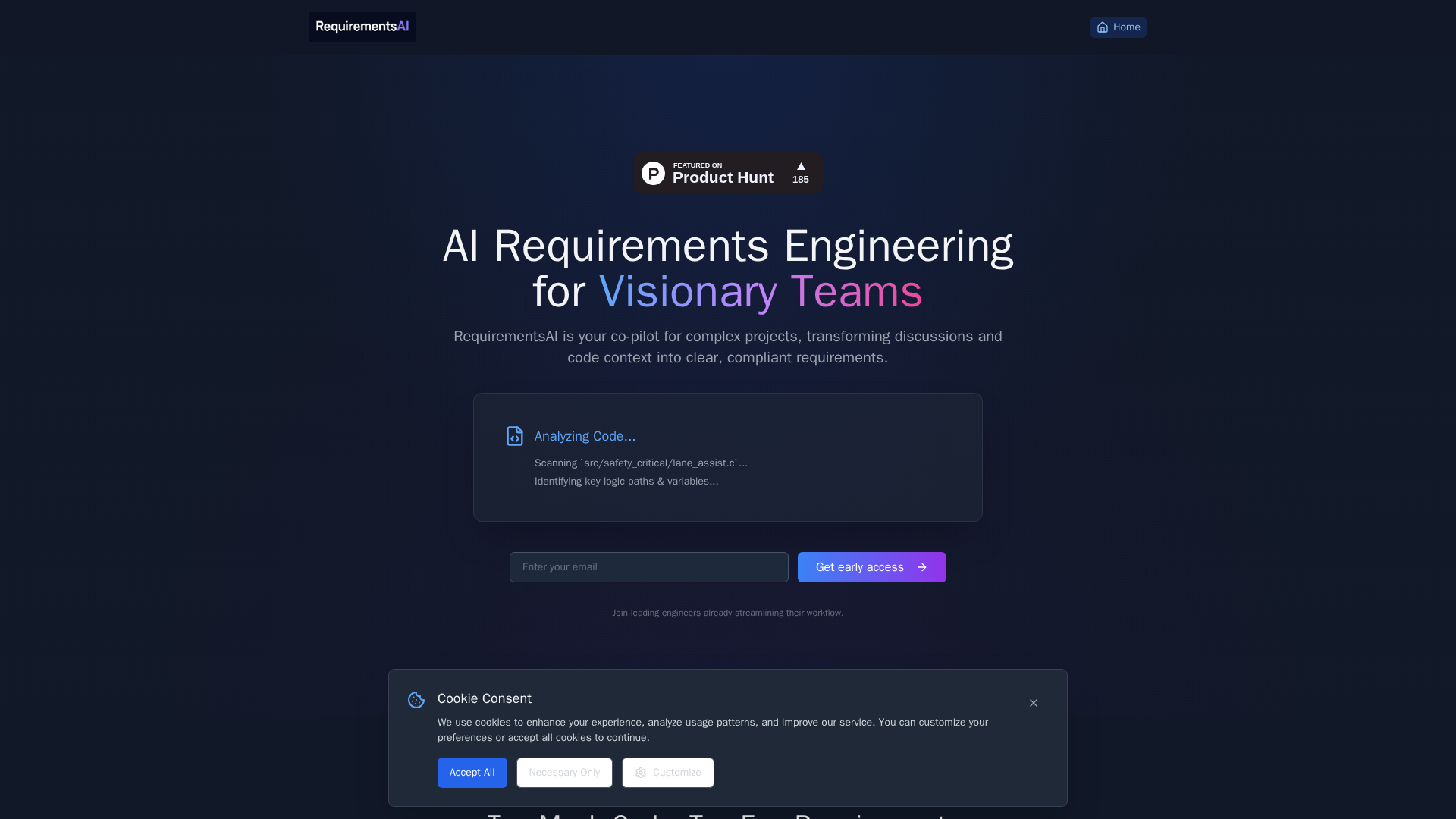RequirementsAI
| Introduction: | RequirementsAI is an AI-powered co-pilot that transforms meeting transcripts and code context into clear, compliant, and structured engineering requirements. |
| Recorded in: | 6/4/2025 |
| Links: |

What is RequirementsAI?
RequirementsAI is an AI-powered co-pilot designed for visionary engineering teams tackling complex projects. It addresses the common dilemma of engineers having too much code and insufficient or outdated requirements by transforming discussions and code context into clear, compliant requirements. The platform helps bridge the documentation gap, enabling teams to ship features faster while maintaining alignment and compliance. It is specifically trained on ISO 26262 and ASPICE principles, making it particularly robust for automotive compliance.
How to use RequirementsAI
Users can get started by joining a waitlist for early access, as the platform is currently in development with upcoming features. The core interaction involves using AI to extract structured requirements (INCOSE, BDD, User Stories) from meeting transcripts. Users can then review, refine, and export these requirements to CSV for integration into their workflow. Future capabilities will include in-IDE code-to-requirement tracing, where the AI suggests relevant documentation as code is written, and seamless integration with DevOps tools like GitHub, Jenkins, and GitLab CI for an automated requirements lifecycle. No pricing information is provided, and access is currently via a waitlist.
RequirementsAI's core features
AI-powered extraction of INCOSE, BDD, and User Stories from meeting transcripts
Automotive compliance focus, trained on ISO 26262 & ASPICE principles
Editable and exportable requirements to CSV
Upcoming: In-IDE code-to-requirement tracing for contextual documentation prompts
Upcoming: Seamless DevOps integration with tools like GitHub, Jenkins, and GitLab CI
Use cases of RequirementsAI
Converting raw meeting transcripts into structured engineering requirements.
Ensuring compliance with industry standards like ISO 26262 and ASPICE for automotive projects.
Streamlining the documentation process for rapidly developed software features.
Bridging the gap between code development and requirements documentation.
Automating the requirements lifecycle by integrating with existing DevOps workflows.
Providing contextual requirement suggestions directly within the IDE during coding.